Progress on Key Global Sustainable Development Targets Explained With 5 Charts
The world has been working together on challenges like climate change and hunger for decades, these charts show some of the progress that was made.
There are now less than 13 years left to achieve the UN’s Global Goals. Launched in 2015, they are officially known as the Sustainable Development Goals.
A total 17 goals cover topics ranging from energy to infrastructure and world peace. One thing they all have in common? A link to climate change.
As the countdown to 2030 continues, these five charts by the Global Goals campaign show the progress made over the years on some of these issues.
1. Poverty
As the effects of climate change become more visible, escaping poverty becomes more difficult according to the World Bank. Climate change hits the poorest people the hardest, they often live in vulnerable areas with the fewest resources to help them adapt or recover quickly from sudden events. But the World Bank says we have a window now for ending extreme poverty and putting in place the safety nets that can keep poverty at bay while also cutting emissions.
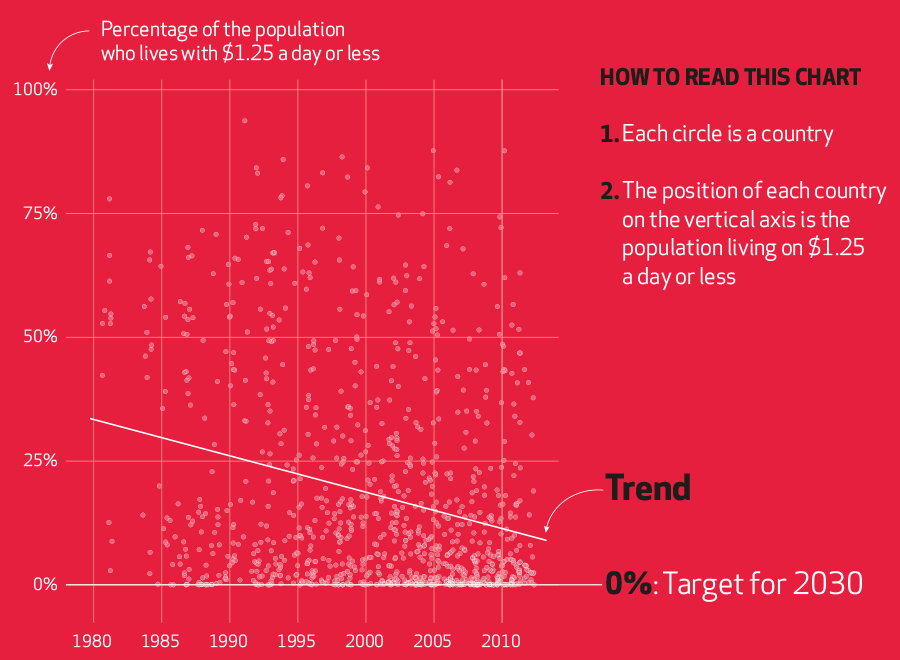
Chart: Poverty rate (World Bank)
2. Child Mortality
Water and climate change are inextricably linked, as the effects of climate change are first felt through water: through droughts, floods and storms, according to UNICEF. Without clean water, children are at risk of diseases such as diarrhoea, which already kills over 800 children under five every day. Using new technologies to map water sources, UNICEF is able to drill more effectively for water and help those in need adapt to the impacts of climate change, and start-ups like Climate-KIC supported Elemental Water Makers are developing innovative desalination systems to produce fresh drinking water.
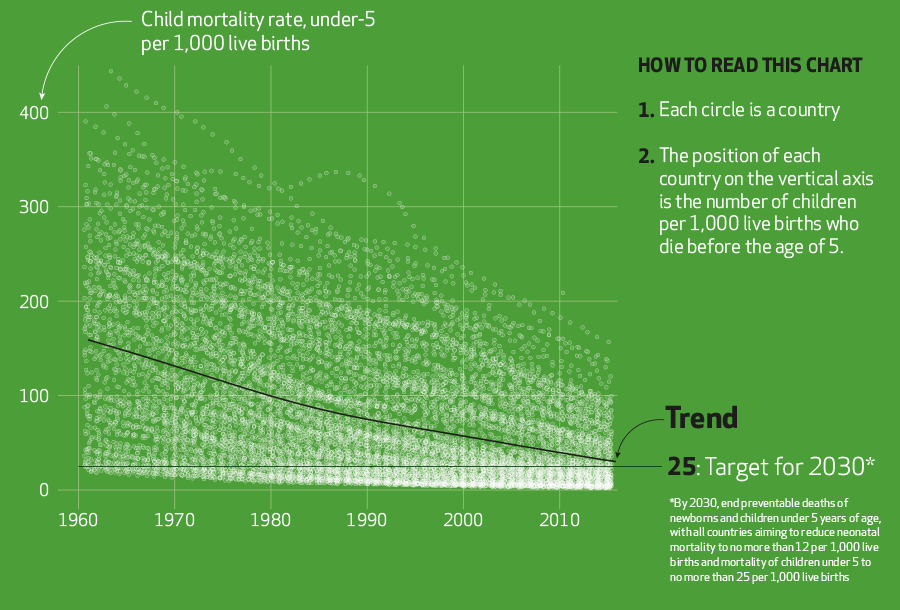
Chart: Child Mortality under 5 (World Bank)
3. Energy
Support from richer countries to enable developing nations to make the shift to a zero-carbon economy is seen as a crucial part of the Paris Agreement. Without it, carbon emissions from countries like India could spin out of control as their growing economies demand increasing amounts of cheap energy. In 2015, the EU and its member states provided €17.6 billion to help developing countries tackle climate change. At the COP22 climate summit, richer countries reconfirmed that they want to mobilise $100 billion annually by 2020 and a technology transfer network received a first funding boost.
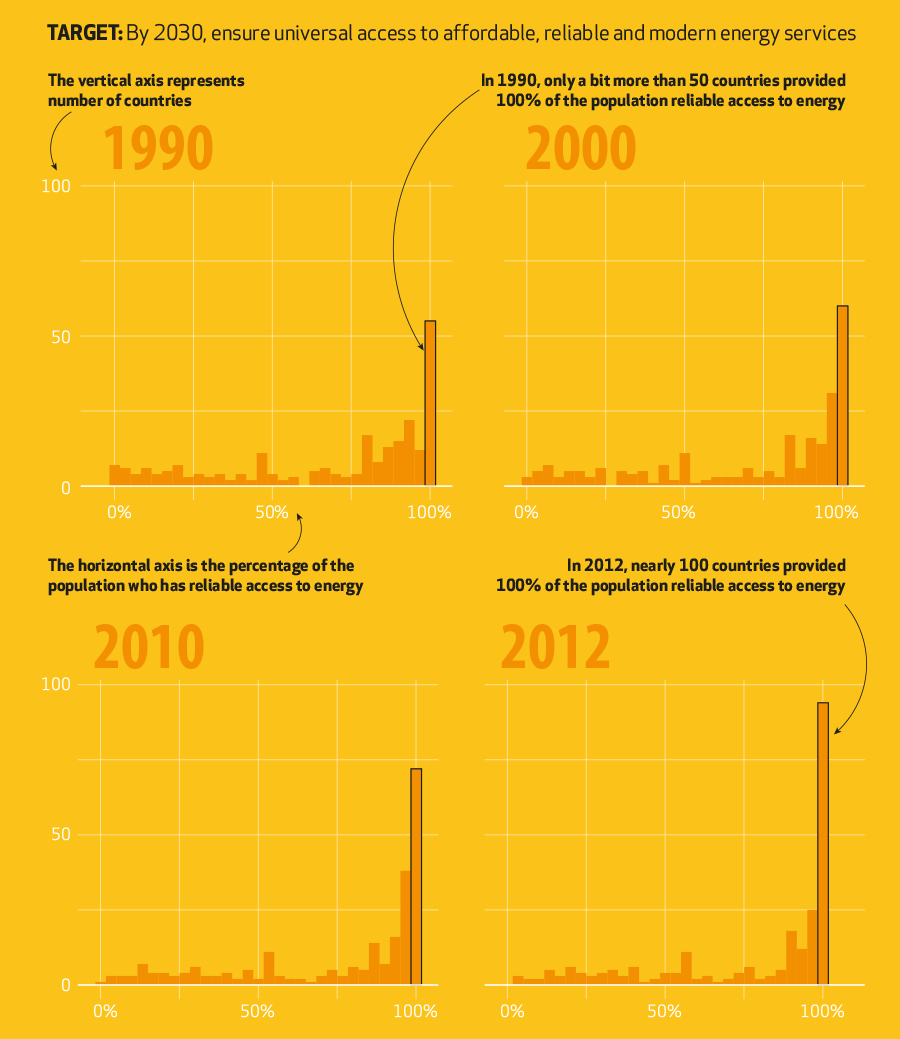
Source: Access to electricity (World Bank)
4. Work
The EU’s latest plan to make clean energy available to all Europeans could generate up to 1 per cent increase in GDP over the next decade and create 900,000 new jobs. “Clean energy is here to stay and has become a jobs and growth engine,” said EU climate commissioner Miguel Arias Cañete. More than eight million people, roughly the equivalent of the entire country of Switzerland, are already employed by the renewable energy industry worldwide. The renewable energy sector employs larger shares of women than the broader energy sector, according to the International Renewable Energy Agency (IRENA).
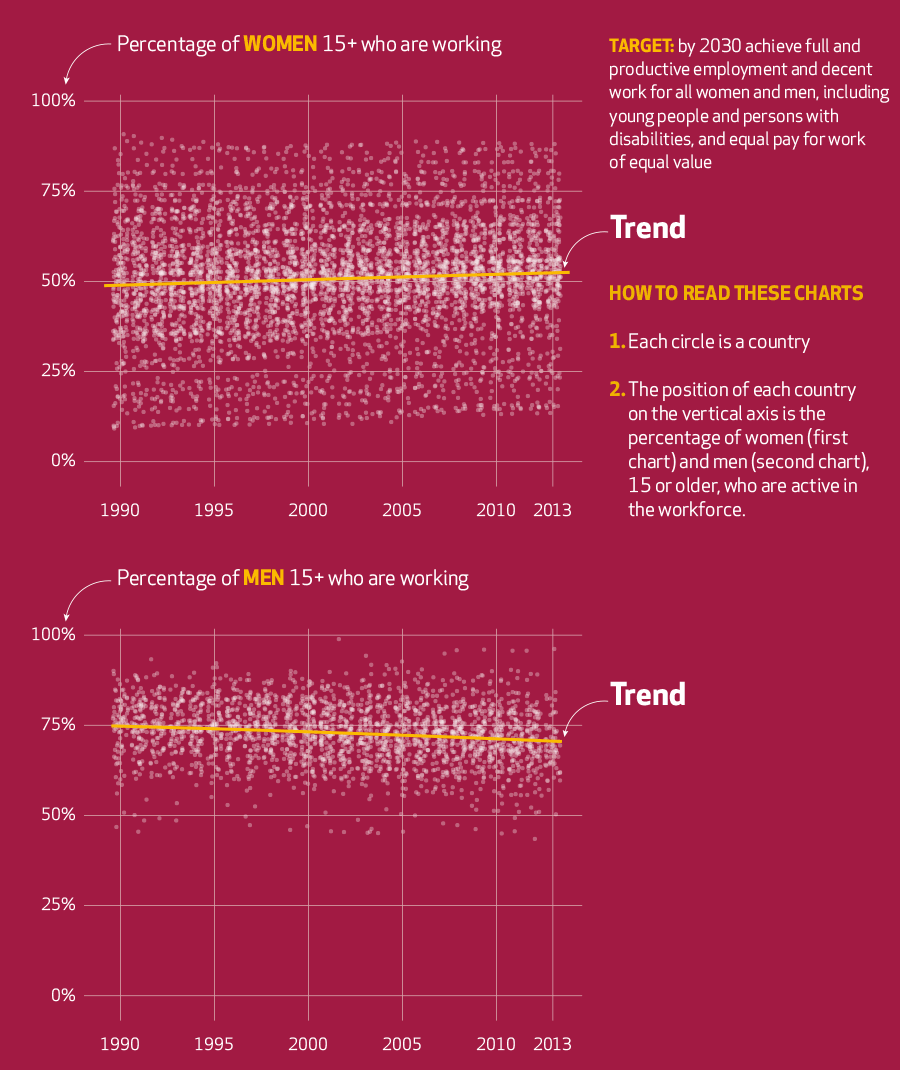
Source: Labor force participation (No Ceilings) of women and men (World Bank)
5. Effective Institutions
Countries need effective institutions to implement climate action strategies. Developed countries help nations that need help to build up the administrative infrastructure to support anything ranging from a legal identity for all citizens to implementing adaptation measures for coastal cities. A special UN Committee on Capacity Building begins its work this year and will help develop and strengthen the skills and expertise needed in developing countries to implement their national climate plans.
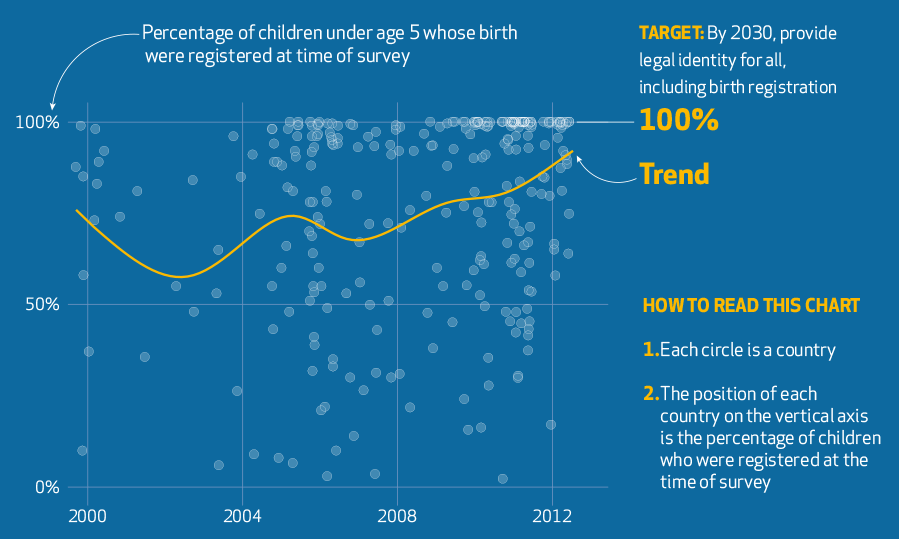
Source: Completeness of birth registration (World Bank)
Do you have ideas to help achieve one or more of these global goals? Find out how Climate-KIC could help turn your idea into a start-up business.

